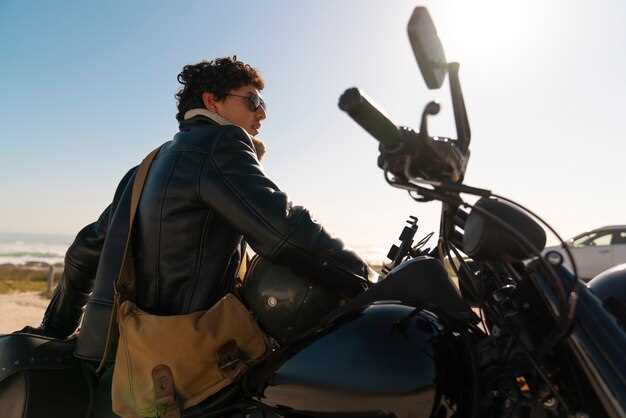
For motorcycle enthusiasts, the decision between a cruiser and a sport touring bike often defines the riding experience. Each category offers a unique set of features, performance capabilities, and aesthetic appeal that caters to different preferences and riding styles. Understanding these distinctions is crucial to making an informed choice that aligns with your lifestyle and aspirations on two wheels.
Cruisers are renowned for their relaxed seating positions, low seat heights, and classic styling. These motorcycles are designed primarily for leisurely rides, often characterized by a powerful, torque-rich engine that provides a smooth and comfortable experience. Riders who appreciate long, meandering journeys on scenic backroads may find the cruiser to be the perfect companion, allowing them to enjoy the ride without the pressure of speed.
In contrast, sport touring motorcycles strike a balance between performance and comfort. Built with an emphasis on versatility, these bikes are ideal for those who crave both exhilarating speed and the ability to tackle long distances. With features such as aerodynamic fairings, advanced suspension systems, and enhanced storage options, sport touring motorcycles prepare riders for everything from weekend getaways to cross-country adventures.
Choosing between a cruiser and a sport touring motorcycle requires careful consideration of your riding goals, preferred aesthetics, and the type of journeys you envision. In this article, we will delve deeper into the key differences, advantages, and potential drawbacks of each style, helping you make a well-rounded decision that resonates with your passion for motorcycle riding.
Cruiser or Sport Touring: Choosing Your Ideal Motorcycle
Selecting the right motorcycle involves understanding the differences between cruiser and sport touring bikes. Cruisers are characterized by their low seat height, relaxed riding position, and classic styling. Typically powered by larger displacement V-twin engines, cruisers are designed for comfortable, leisurely rides. They are ideal for riders who appreciate a vintage aesthetic and a laid-back experience on long, straight roads. Popular brands such as Harley-Davidson and Indian exemplify this style, catering to enthusiasts seeking personalization and a strong community following.
In contrast, sport touring motorcycles blend the agility of sport bikes with the comfort needed for longer journeys. These motorcycles feature a more upright seating position, advanced aerodynamics, and often come equipped with features such as windshields and luggage systems. Engine performance is generally tuned for a balance of power and fuel efficiency, making them well-suited for both spirited rides through twisty roads and extended highway cruising. Brands like BMW and Yamaha offer excellent models that reflect this versatility.
When choosing between the two, consider your primary riding goals. If you enjoy relaxed rides with a focus on style and comfort, a cruiser may be the perfect fit. However, if you seek versatility, performance, and the capability to tackle various terrains and distances, a sport touring bike may better suit your needs. Ultimately, the decision hinges on your riding style, preferences, and how you envision your motorcycle experience.
Understanding the Key Features of Cruisers

Cruiser motorcycles are designed for long, comfortable rides, making them an appealing choice for aspiring bikers or seasoned riders alike. One of the most distinctive features of cruisers is their low seat height, which enhances stability and comfort while allowing riders to place their feet securely on the ground when stopped.
The ergonomic seating position is another hallmark of cruisers. Typically featuring a relaxed angle between the seat and handlebars, this design allows for a more laid-back riding posture. Riders often find this position less tiring during extended journeys, reducing fatigue and allowing for a more enjoyable experience.
Powerplants in cruiser motorcycles often utilize larger displacement V-twin engines. These engines provide ample low-end torque, which translates to smooth acceleration and a more satisfying ride, particularly for city commuting and relaxed highway cruising. Additionally, the torque characteristic of these engines contributes to the cruiser’s distinctive rumble, further enhancing the riding experience.
Another defining feature is the minimalist aesthetic often associated with cruisers, emphasizing sleek lines and classic designs. Many cruisers allow for various customization options, enabling riders to personalize their motorcycles to reflect individual styles. Accessories such as saddlebags, windshield options, and upgraded seating can transform a stock model into a unique ride tailored to personal preferences.
Handling characteristics are also a focal point. Cruisers generally have a longer wheelbase, providing stability on straight roads. However, this can lead to a more cumbersome feel during tight maneuvers. Riders should be prepared for this difference and gain experience in handling the bike effectively in different riding scenarios.
In conclusion, the key features of cruisers revolve around comfort, power, and style. With their distinctive low profiles, relaxed ergonomics, and customization possibilities, cruisers offer a blend of practicality and aesthetic appeal tailored for those who cherish leisurely rides.
What to Consider When Choosing a Sport Touring Bike
When selecting a sport touring motorcycle, several key factors must be considered to ensure you find the ideal ride that suits your needs and preferences. Here are the main elements to keep in mind:
- Comfort: Long-distance rides require a comfortable seating position. Test various seat types to find one that supports your lower back and promotes an ergonomic riding position.
- Ergonomics: Consider handlebar height and footpeg placement. An upright riding posture can minimize fatigue during extended trips.
- Performance: Evaluate engine power and torque. A sport touring bike should offer strong acceleration and the ability to handle both city traffic and highway cruising seamlessly.
- Weight: Lighter bikes are generally easier to maneuver, especially in tight situations or when parking. However, ensure the bike is stable at high speeds and when fully loaded.
- Storage Options: Look for models with built-in storage solutions or compatible aftermarket options for saddlebags and top cases, which are crucial for touring.
- Wind Protection: A good windscreen can significantly enhance comfort during long rides by reducing fatigue caused by wind resistance and buffeting.
- Fuel Efficiency: Longer trips demand a fuel-efficient engine. Consider the bike’s fuel range to avoid frequent stops during your adventures.
- Technology Features: Assess modern conveniences like integrated navigation systems, Bluetooth connectivity, and advanced safety features such as ABS and traction control.
- Maintenance and Service: Research the reliability of the brand and the availability of service centers. Choose a bike with readily available parts for easier maintenance.
- Test Ride: Always take a test ride before purchasing. This helps gauge the bike’s handling, comfort, and overall feel, ensuring you make an informed decision.
By carefully evaluating these factors, you can select a sport touring motorcycle that meets your specific requirements and enhances your riding experience.
Comparing Comfort and Performance for Long-Distance Riding

When it comes to long-distance riding, two critical factors to consider are comfort and performance. These elements play a significant role in determining whether a rider enjoys their journey or endures discomfort and fatigue.
Comfort is paramount for long trips. Cruiser motorcycles typically excel in this department. They offer wide, cushioned seats and an upright riding position, allowing riders to sit back and relax over long stretches. The footpegs are positioned further forward, which helps reduce strain on the legs. Additionally, many cruisers come equipped with ample storage options, making it easier to carry essentials without compromising comfort.
On the other hand, sport touring bikes are designed with performance in mind but do not compromise on comfort. These bikes often feature a more aggressive seating position that leans slightly forward but still provides adequate cushioning for long rides. They incorporate advanced suspension systems designed to absorb bumps and improve overall handling. This can make a substantial difference during extended travel, especially on uneven or winding roads.
Performance is another essential factor to evaluate. Sport touring motorcycles tend to have powerful engines and superior handling capabilities. This allows riders to navigate through challenging terrains and reach higher speeds efficiently. Initially, a sport touring bike might seem more appealing due to its responsive acceleration and ability to tackle winding roads with enthusiasm.
Conversely, cruisers prioritize low-end torque, which is advantageous for relaxed highway cruising. They often offer a more engaging riding experience for leisurely journeys. However, their heavier weight can impact maneuverability, especially at slower speeds or during stops.
In conclusion, the choice between comfort and performance ultimately depends on personal preferences and riding style. For those prioritizing comfort during long-distance adventures, cruisers may be the better option. In contrast, if performance and agility matter more, sport touring motorcycles might be the ideal fit. Evaluating individual needs and test riding several models can help make the best decision for long-distance riding adventures.